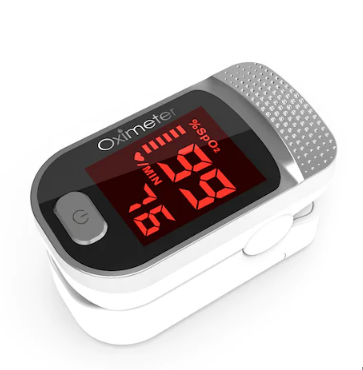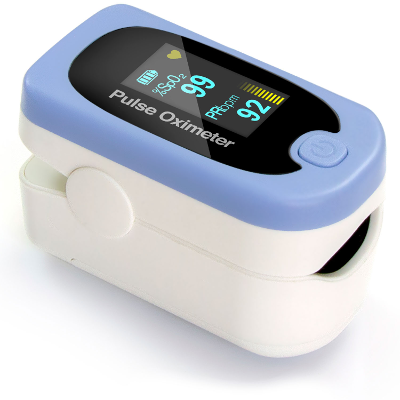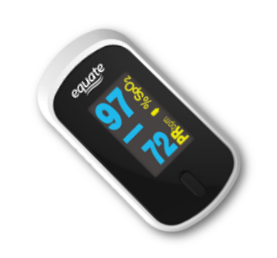Pulse oximeters can save lives during the COVID-19 pandemic

Sun, 09/20/2020 - 00:12
Pulse oximeters are routinely used by healthcare professionals in medical settings such as clinics and hospitals. However, the demand for pulse oximeters for home use has increased during the coronavirus pandemic. Typically, they are used in the home only in rare cases to monitor people with serious conditions such as heart or lung complications. But now, pulse oximeters are selling out everywhere after being praised to be able to save lives during the COVID-19 pandemic.
So should you be rushing out to buy a pulse oximeter right now? The reality is that various factors can influence this decision. Existing health concerns as well as your approach to proactively protect yourself and your loved ones from the coronavirus play a role in coming to a conclusion. It is also important that you first familiarize yourself with what a pulse oximeter is, how it works and how it can be useful during the COVID-19 pandemic.
What is a pulse oximeter?
A pulse oximeter is a medical device that measures the level of oxygen in your blood. It is commonly used in by healthcare providers when checking for vitals. It is also used for continuous monitoring on patients who are at risk of having their oxygen levels drop due to other medical conditions. Continuous monitoring may take place in a hospital or at home.
Pulse oximeters are a non-invasive and painless method of checking your blood oxygen level. They are usually designed like a clip that attaches to a body part such as your toes or earlobes. The most common method however is to clip it on to your finger. Using a pulse oximeter is fairly simple and it takes only seconds to report your blood oxygen reading.
How do pulse oximeters work?
Pulse oximeters measure the saturation of oxygen in the hemoglobin in your blood. Hemoglobin is a protein in your blood that carries oxygen from the lungs to other parts of the body and brings the carbon dioxide back to the lungs. Each molecule of hemoglobin can carry up to four molecules of oxygen. A molecule of hemoglobin is considered to be at 100% saturation when it is carrying that maximum capacity.
Pulse oximeters have light emitting diodes that pass beams of red light as well as infrared light through the finger. There is a light-receiving detector on the other side which is used to detect how much light passes through the hemoglobin and how much is absorbed. Oxygenated hemoglobin absorbs more of the infrared light whereas deoxygenated hemoglobin absorbs more red light.
Are pulse oximeters accurate and reliable?
Pulse oximeters report blood oxygen levels fairly accurately. Most pulse oximeters measure blood oxygen level within a correction of 2%. So if a reading of 94% is displayed, it may actually be anywhere between 92% and 96%.
However, there are some known factors that may compromise the accuracy of a pulse oximeter. Long nails may interfere with proper fitting of the device on to the finger. Since pulse oximeters use light to perform their task, strong room lighting may also manipulate the readings. Nail polish or artificial nails may also manipulate light absorption and lead to inaccurate readings.
Can you check your blood oxygen level with a smartphone app?
There is no shortage of smartphone apps that can measure your blood oxygen level along with other health parameters. Better ones continue to emerge daily in a competitive and rapidly advancing space in smartphone technology. But according to healthcare professional, the blood oxygen saturation readings obtained using a smartphone app are still not considered accurate and reliable.
Can pulse oximeters detect COVID-19?
It is important to understand that a pulse oximeter cannot detect, cure nor prevent COVID-19. It is not a screening device for the coronavirus and should not replace a clinical test. Pulse oximeters can be useful for detecting a specific symptom of coronavirus; A symptom which indicates a serious, potentially life-threatening situation.
How are oximeters useful for coronavirus?
The most common symptoms of COVID-19 include fever, dry cough, fatigue and aches and pains. Loss of taste or smell and difficulty breathing or shortness of breath - although rare – indicate a more severe infection. They often coincide with a decrease in blood oxygen levels.
Hypoxia is the medical term used to describe lower than ideal saturation of oxygen in the blood. In some cases, people with COVID-19 may have alarmingly low blood oxygen levels but otherwise feel and appear well. This is called “Happy Hypoxia”. If not addressed on time, hypoxia can lead to severe organ damage or even death.
Pulse oximeters can help in discovering hypoxia. Heaven forbid if you or a loved one ever displays symptoms of COVID-19, the pulse oximeter becomes essential as a thermometer. Periodic pulse oximeter readings can help you closely monitor if your condition starts to deteriorate.
Considering the fact that COVID-19 causes “happy hypoxia”, a pulse oximeter may be good to have around even in case of no symptoms being displayed.
How to read a pulse oximeter?
Pulse oximeters are fairly easy to read. Most pulse oximeters display the blood oxygen saturation as well as the pulse rate. The blood oxygen saturation reading is often labelled as SpO2 and the pulse rate as PR.
A SpO2 reading between 90% and 100% is considered stable and is not a cause for concern. An oxygen saturation level of around 95% is considered normal for healthy individuals.
Which pulse oximeter is best for home use?
If you do decide to buy a pulse oximeter to add to your COVID-19 toolkit, you should know that some are better than others. There are many companies that make them. They all have their own algorithms to calculate the number so naturally some give more accurate reading than others.




